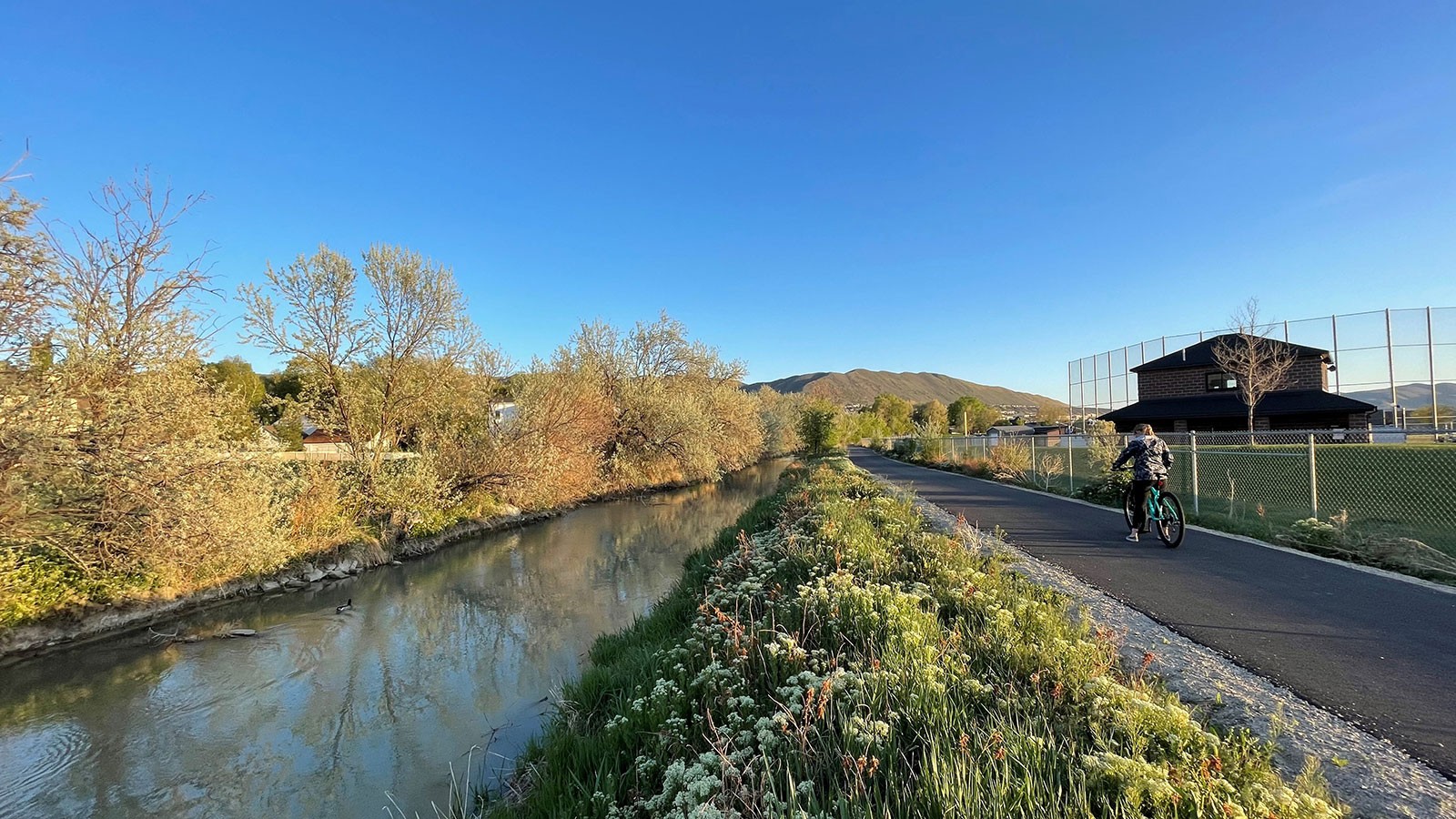Interdisciplinary Team of Researchers Explores How Canal Corridors Can Support Active Transportation
By Matilyn Mortensen |
An interdisciplinary team of Utah State University researchers recently explored how historic canal trails can be used as an active transportation solution. Their findings will help the Utah Department of Transportation and community leaders make decisions about building canal paths and trails.
As Utah’s population continues to grow at one of the fastest rates in the nation, many communities are working to increase active transportation. Paths and trails can be a great tool to encourage walking and biking but can be difficult to build in already developed urban areas. Because of this, Utah State University researchers explored the use of historic canal corridors as a potential solution.
The research project “Active Transportation Facilities in Canal Corridors” was completed for the Utah Department of Transportation and was published by the American Society of Civil Engineers in June.
Researchers for the project included Patrick Singleton, an assistant professor of transportation; Alfonso Torres, an assistant professor of water; and Matthew Crump and Adam Pack, both recent master of civil and environmental engineering graduates. The research was also Crump’s master’s thesis.
By reviewing case studies of existing canal trails, such as the Murdock Canal Trail in Utah County and the Highline Trail in Cache County, and interviewing stakeholders like canal operators and local planners, the team found there are many potential benefits for communities who want to build canal paths and trails.
“One potential benefit of creating a canal trail formally is to formalize that use,” Singleton said. “A lot of people are using canals informally as trails in some cases. And by formalizing that use, there can be some protections for the canal or the property owners along the canal.”
Trails can be built alongside open canals or atop closed canals. Building a trail can create a mutual interest between community leaders and canal operators to keep the corridor clean. In the case of covered canals, a trail can help preserve the canal easement and make it easier to repair the canal if needed.
The research found that the primary challenges to building canal trails are land ownership, maintenance, safety, liability, funding and privacy. These challenges can be overcome using long-term planning, stakeholder collaboration, iterative design and active public involvement.
Singleton and Crump said they hope their research will make community leaders more aware of both the opportunity and the steps that need to be taken for the trails to be successful.
WRITER
Matilyn Mortensen
Public Relations Specialist
College of Engineering
435-797-7512
matilyn.mortensen@usu.edu
CONTACT
Patrick Singleton
Assistant Professor
Civil and Environmental Engineering
434-797-7109
Patrick.singleton@usu.edu
TOPICS
Water 257stories Outdoor 78storiesComments and questions regarding this article may be directed to the contact person listed on this page.







